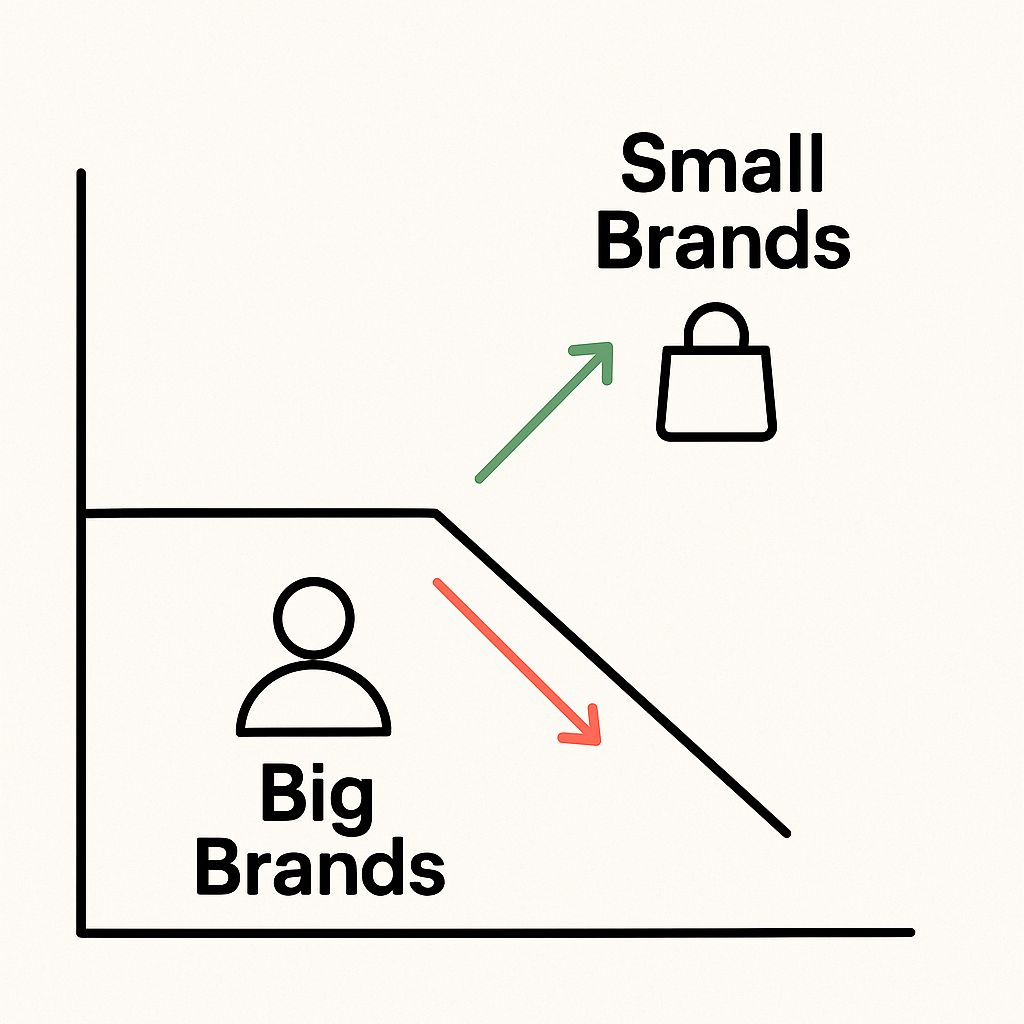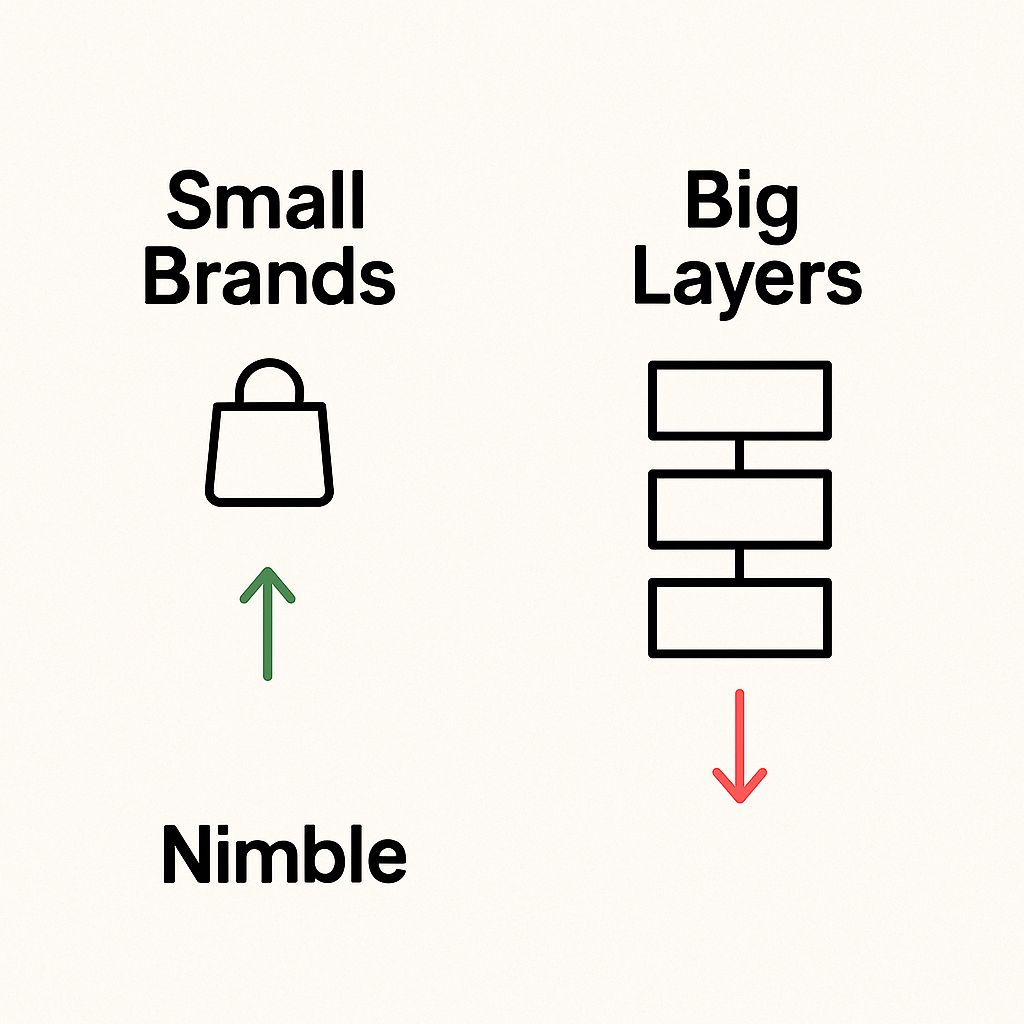- TikTok Shop Playbook
- Posts
- Why scrappy brands out-execute 9-figure brands on TikTok Shop
Why scrappy brands out-execute 9-figure brands on TikTok Shop
One of the harshest realities I’ve seen in TikTok Shop is this:
The scrappy founder with almost no resources can out-execute the 9-figure brands with “unlimited capital”.
That’s not theory. I’ve seen it happen over and over again.
On one hand, small businesses are strapped by resources. They don’t have the luxury of big ad budgets, large marketing teams, or multiple agencies working in parallel. But what they do have is the founder’s obsession.
The founder is in the trenches:
They’re posting raw iPhone videos themselves.
They’re reading customer comments at midnight and adjusting product pages on the spot.
They’re DM’ing creators one by one, convincing them to try the product.
They’re testing different bundles and offers within days, not months.
When you’re strapped for capital, you don’t have the option to wait. You figure it out fast — or you die.
And strangely enough, that urgency is what makes many small shops thrive on TikTok Shop.

Why bigger brands struggle
Now let’s flip it.
On the other side of the spectrum, you have the 9-figure and billion-dollar brands. In theory, these companies should dominate TikTok Shop. They’ve got the budget. They’ve got the resources. They’ve got distribution advantages that scrappy founders can only dream of.
But here’s the problem: TikTok Shop doesn’t reward capital. It rewards speed.
Big brands are not built for speed. They’re built for stability, brand consistency, and minimizing risk. All good things in traditional channels, but fatal flaws on TikTok Shop.
Here’s what I see inside larger organizations:
Conflicting interests across teams. The influencer marketing team wants to push Shop, but the performance marketing team doesn’t want to cannibalize DTC.
No clear owner. TikTok Shop sits in a gray zone — is it a social team project, an e-commerce project, or a growth project? Often it ends up being no one’s priority.
Slow approvals. A single TikTok video or influencer contract can take weeks to move through legal, brand, and procurement. Meanwhile, small businesses are already on video #20.
Talent gaps. The truth is: many teams inside big brands just don’t know how TikTok Shop works. They don’t understand the creator ecosystem, how affiliates drive GMV, or the speed of iteration required.
So while the small founder is scrappy and fast, the big brand is paralyzed by its own weight.
TikTok Shop is an execution game
If there’s one thing I want you to take away, it’s this:
TikTok Shop doesn’t care how much money you have. It cares how fast you can execute.
The algorithm rewards content volume. The affiliates reward fast onboarding and quick product approvals. Consumers reward authentic, timely content that feels native to the platform.
That’s why the scrappy founder, working out of their apartment, can run laps around the 9-figure+ companies. Not because they’re better funded — but because they move faster.
I’ll give you an example:
A small beauty brand I know got to $100K/month in GMV within 100 days. The founder was posting raw content daily, reaching out to hundreds of creators, and testing offers every week.
Meanwhile, a conglomerate brand with thousands of employees struggled to break $30K/month after five months. Too many layers of approvals. Too many competing interests. Too few people who actually understood TikTok Shop.
The difference wasn’t money. It was execution.
What small brands need to keep in mind
Now, being scrappy gets you into the game — but staying in the game requires scale.
Small brands need to think about how to operationalize what works:
Once a hero SKU emerges, double down on it and keep feeding it into the affiliate engine.
Systemize creator outreach instead of DM’ing manually forever.
Build processes around monthly analysis, so you’re not guessing what worked.
Start thinking about margin and contribution profit early, not just GMV.
Scrappiness wins early, but eventually, you’ll need infrastructure if you want to scale beyond $200K/month+ on Shop.
What big brands need to do differently
For bigger brands, the solution isn’t more budget. It’s creating founder-like speed inside the org.
That might look like:
Empowering a small, lean TikTok Shop team that can operate without being bogged down by corporate bureaucracy.
Hiring specialists — people who have already figured out the Shop playbook and can move faster than your existing team.
Partnering with external experts who live and breathe TikTok Shop daily.
Aligning internal stakeholders so there aren’t competing priorities between e-commerce, retail, and brand.
The brands that figure this out will eventually crush small businesses — because once they combine speed with their existing capital and distribution, the game changes.
But until then, small businesses have the upper hand.

The harsh reality
This is the harsh reality of TikTok Shop today:
Small businesses don’t have money, but they have speed.
Big businesses have money, but no speed.
The winners? The ones who figure out how to combine both.
And for now — speed beats money.
Closing
Every day I see this dynamic play out. A scrappy founder builds a seven-figure TikTok Shop in months. Meanwhile, a billion-dollar brand is still in “pilot mode” after half a year.
That’s why I always say: TikTok Shop is not an investment channel, it’s an execution channel.
The harsh truth is, if you can’t execute fast, you will lose — no matter how much capital you have.